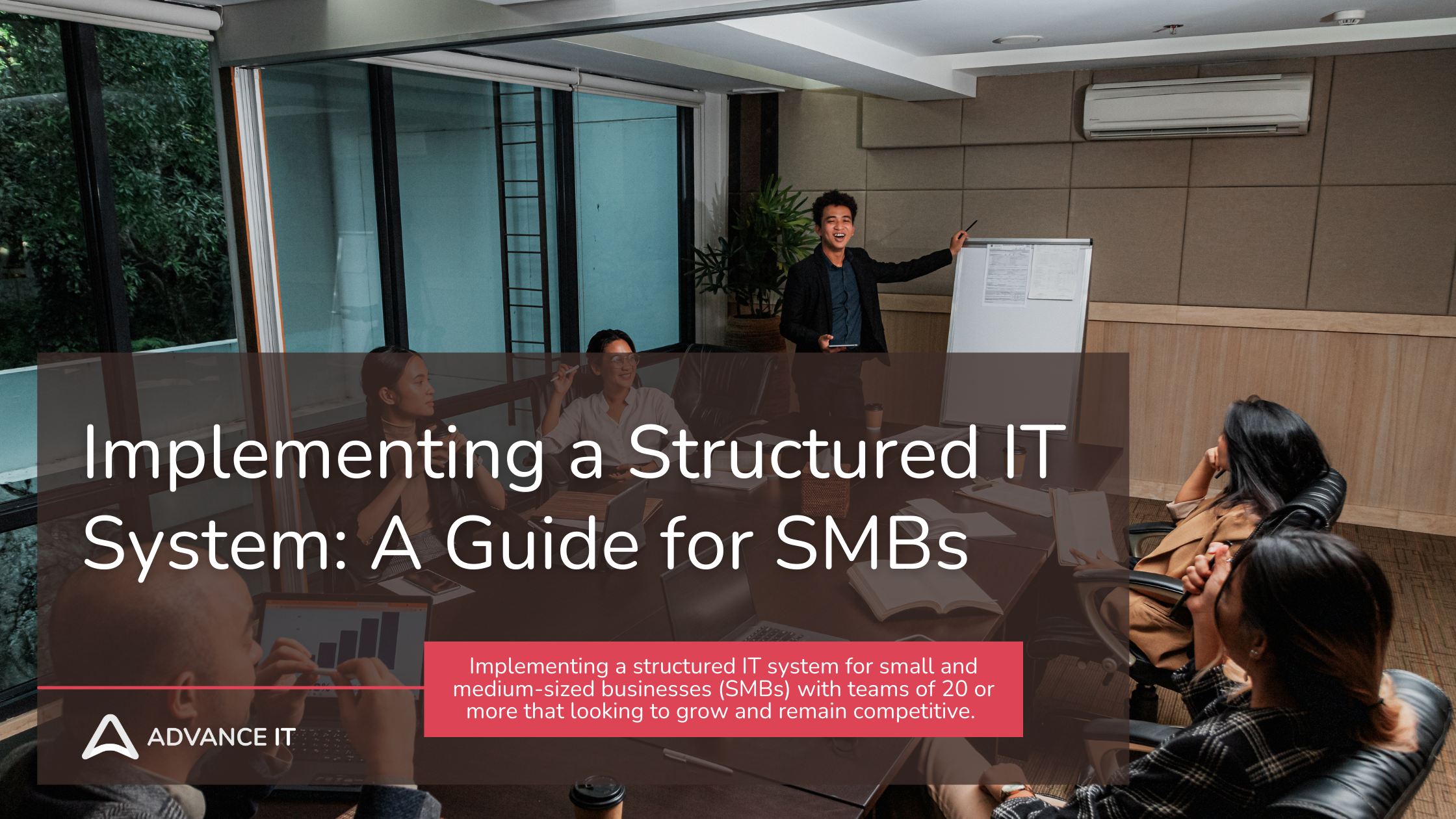Implementing a Structured IT System: A Guide for SMBs
Having a structured IT system is crucial for small and medium-sized businesses (SMBs) with teams of 20 or more. With it, businesses can easily navigate security lapses, inefficiencies, and operational disruptions. A structured IT system ensures that your technology infrastructure is organized, secure, and scalable, allowing your business to operate smoothly and grow efficiently.
1. Assessment and Strategic Planning
Before implementing a structured IT system, assessing your current IT environment is essential. Many SMBs operate in a "freestyle" manner, with no dedicated IT oversight, leading to inconsistent workflows and unmanaged risks. According to a study by Cisco, 53% of mid-sized businesses have experienced a data breach, often due to inadequate IT management (Default).
Steps to Take:
Conduct a comprehensive IT audit to evaluate your existing infrastructure, identify gaps, and assess risks.
Set clear IT goals that align with your business objectives, such as enhancing security, improving efficiency, or enabling scalability.
Develop a detailed implementation plan with timelines, resource allocations, and budget considerations.
2. Building a Scalable Infrastructure
As your business grows, your IT infrastructure needs to scale without compromising performance. According to Gartner, businesses that fail to scale their IT infrastructure effectively can experience up to 25% more downtime, directly impacting productivity and revenue (Deloitte United States).
Steps to Take:
Adopt cloud-based solutions for flexible, scalable resources that can grow with your business needs.
Ensure your network infrastructure can support increased data traffic, additional users, and new applications without bottlenecks.
Invest in scalable hardware and software that can be upgraded as your business expands.
3. Implementing Robust Security Measures
SMBs are prime targets for cyberattacks due to their often weaker security postures. A structured IT system includes comprehensive security protocols to protect against these threats. The Ponemon Institute reports that 66% of SMBs have experienced a cyberattack, with average recovery costs exceeding $200,000 (Default) (Deloitte United States).
Steps to Take:
Deploy multi-layered security solutions, including firewalls, encryption, and advanced threat detection systems.
Regularly update software and hardware to patch vulnerabilities and strengthen defenses.
Develop a cybersecurity policy that includes employee training, incident response plans, and regular security audits.
4. Standardizing IT Processes and Policies
Standardization brings consistency to IT operations, reducing errors and ensuring that all team members follow best practices. This is particularly important for SMBs where resources are limited, and efficiency is key.
Steps to Take:
Create standardized IT policies covering areas such as password management, data handling, and software usage.
Implement process automation where possible to streamline repetitive IT tasks and improve consistency.
Regularly review and update policies to keep pace with technological changes and emerging threats.
5. Ongoing Monitoring and Maintenance
Continuous monitoring and regular maintenance are critical components of a structured IT system. They help identify and resolve issues before they escalate, minimizing downtime and maintaining system performance. According to IDC, businesses that implement proactive IT monitoring can reduce downtime by up to 50% (Deloitte United States).
Steps to Take:
Deploy monitoring tools that provide real-time insights into system performance and security.
Schedule regular maintenance tasks, including updates, backups, and hardware inspections, to keep systems running smoothly.
Set up automated alerts for any anomalies, allowing for prompt action to prevent major disruptions.
6. Ensuring Data Management and Compliance
Data is a critical asset for any business, and managing it effectively is essential for operational success and regulatory compliance. According to a report by Symantec, 43% of cyberattacks target SMBs, with data breaches often resulting in severe financial and reputational damage (Default).
Steps to Take:
Implement a robust data management strategy that includes data classification, encryption, and secure storage solutions.
Ensure regular data backups and establish a disaster recovery plan to prevent data loss.
Stay compliant with industry regulations such as GDPR, HIPAA, or others relevant to your business, by regularly auditing your data practices and security measures.
Conclusion
Implementing a structured IT system is vital for SMBs looking to grow and remain competitive. By assessing your current infrastructure, building scalable solutions, prioritizing security, standardizing processes, and ensuring ongoing maintenance, you can create a robust IT environment that supports your business goals and protects against potential risks.
If managing IT in-house seems daunting, Advance IT offers tailored support to help you design, implement, and maintain a structured IT system that meets your specific needs.





